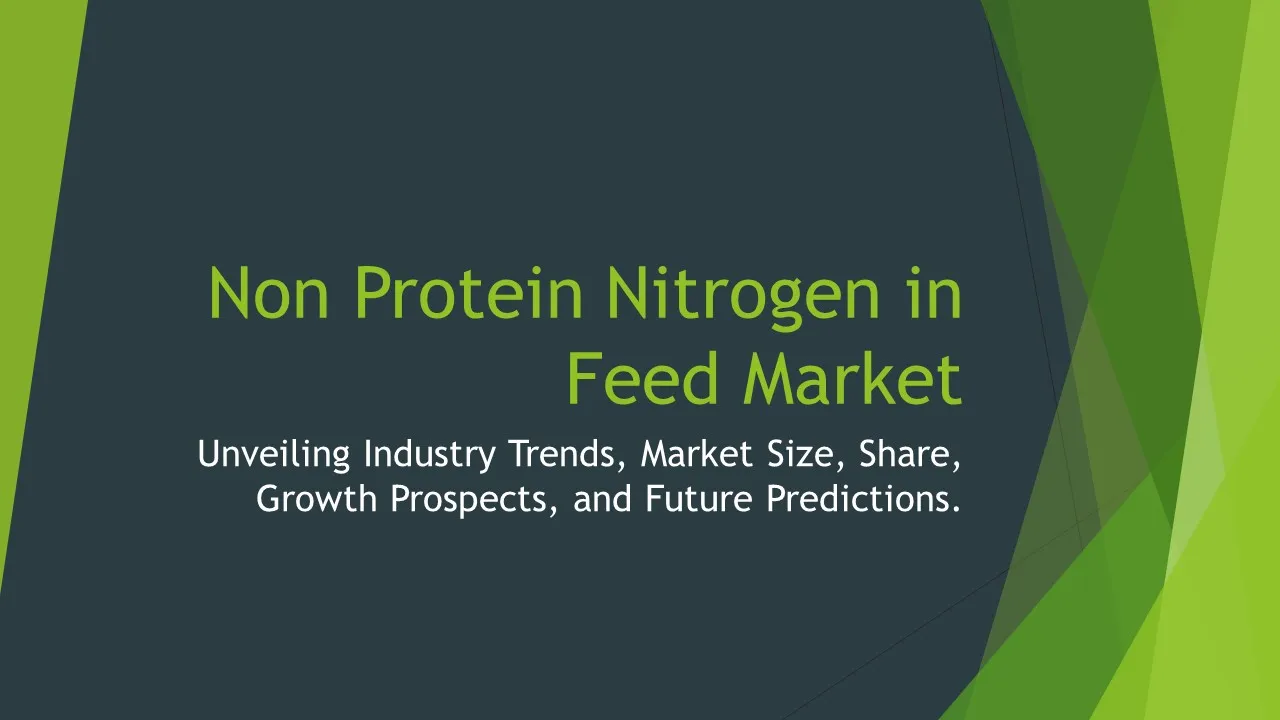Animal Feed Dietary Fiber
Animal Feed Dietary Fiber Market Segments - by Product Type (Soluble Fiber, Insoluble Fiber, Functional Fiber, Digestive Fiber, Fermentable Fiber), Application (Poultry Feed, Swine Feed, Ruminant Feed, Aqua Feed, Pet Food), Distribution Channel (Online Stores, Feed Mills, Veterinary Clinics, Supermarkets/Hypermarkets), Ingredient Type (Oat Fiber, Alfalfa Fiber, Soy Fiber, Wheat Bran, Sugar Beet Pulp), and Region (North America, Europe, Asia Pacific, Latin America, Middle East & Africa) - Global Industry Analysis, Growth, Share, Size, Trends, and Forecast 2025-2035
- Report Preview
- Table Of Content
- Segments
- Methodology
Animal Feed Dietary Fiber Market Outlook
The global Animal Feed Dietary Fiber market is anticipated to reach USD 9.5 billion by 2035, growing at a robust CAGR of 7.2% during the forecast period of 2025–2035. This substantial growth can be attributed to the increasing awareness regarding the importance of dietary fiber in animal health and nutrition, which has resulted in a higher demand for fiber-rich animal feed products. Additionally, the rising trend of sustainable and natural feed components has further stimulated market growth, as manufacturers are focusing on integrating dietary fibers that improve digestive health and boost the overall performance of livestock. The demand for healthy and nutritious animal feed options is expected to drive innovation and formulations in the market, enabling manufacturers to cater to the evolving needs of the animal husbandry sector.
Growth Factor of the Market
The growth of the Animal Feed Dietary Fiber market is primarily driven by the increasing recognition of the nutritional benefits that dietary fiber offers to livestock. With the rise in global meat consumption and the growing livestock population, animal feed producers are compelled to enhance the nutritional value of their products, consequently accelerating the demand for dietary fibers. Furthermore, regulatory authorities and industry organizations are recommending the inclusion of dietary fibers in livestock feed to promote better gut health and improve feed efficiency, contributing to better growth rates and overall productivity. An additional factor propelling market growth is the heightened focus on sustainable agricultural practices, leading to a shift towards natural and organic feed ingredients enriched with dietary fibers. This alignment with health-conscious trends among consumers is prompting feed manufacturers to adapt their offerings to meet the evolving preferences of both livestock producers and consumers.
Key Highlights of the Market
- The market is projected to grow at a CAGR of 7.2% from 2025 to 2035.
- Increased meat consumption globally is driving demand for efficient animal feed.
- The shift towards natural and organic animal feed ingredients is gaining traction.
- Regulatory support for fiber inclusion in feed formulations is enhancing market growth.
- The rising awareness regarding animal health is fostering innovation in dietary fiber products.
By Product Type
Soluble Fiber :
Soluble fiber is one of the key segments in the Animal Feed Dietary Fiber market, recognized for its ability to dissolve in water and form a gel-like substance. This property aids in enhancing the digestibility of feed, allowing for better nutrient absorption in animals. Soluble fibers are particularly beneficial in the diets of ruminants, as they help regulate blood sugar levels and lower cholesterol. The increasing demand for high-quality feed that promotes animal health has led to a surge in the use of soluble fibers derived from sources like oats, fruits, and legumes. Its functional benefits, including weight management and improved gut health, further position soluble fiber as a favored option among livestock producers.
Insoluble Fiber :
Insoluble fiber plays a critical role in maintaining digestive health and normalizing bowel movements in animals. It does not dissolve in water and is essential for promoting a healthy gut microbiome. This type of fiber is commonly sourced from wheat bran, corn husks, and other plant materials. The demand for insoluble fiber is driven by its ability to enhance feed quality and support nutrient absorption in various livestock species, especially ruminants and swine. The increasing prevalence of digestive disorders in livestock due to poor feed quality has further solidified the importance of incorporating insoluble fibers into feed formulations. Consequently, manufacturers are focusing on developing specialized feed products enriched with insoluble fiber to meet this growing demand.
Functional Fiber :
Functional fiber is gaining traction in the Animal Feed Dietary Fiber market due to its specific health benefits that extend beyond basic nutrition. These fibers are often added to animal feed to promote optimal gut health, improve feed efficiency, and enhance overall productivity in livestock. Functional fibers are derived from various sources like psyllium and inulin, providing prebiotic effects that support the growth of beneficial gut bacteria. The increasing awareness among livestock producers about the significant impact of gut health on overall animal performance is driving the demand for functional fibers. Moreover, the growing trend towards natural feed additives is stimulating the development of innovative feed formulations enriched with functional fibers.
Digestive Fiber :
Digestive fiber is specifically designed to aid in the digestive process, making it a vital component of animal feed formulations. This type of fiber helps to maintain gut health and function by promoting regular bowel movements, enhancing nutrient absorption, and preventing digestive disorders. The rising concerns regarding animal welfare and health are prompting livestock producers to seek out feeds that contain digestive fibers. Various sources, such as beet pulp and cellulose, are utilized to incorporate digestive fiber into animal diets. As more producers recognize the importance of digestive health for improving animal performance and productivity, the demand for digestive fiber in the feed industry is expected to grow steadily.
Fermentable Fiber :
Fermentable fiber is increasingly recognized for its ability to be fermented by gut bacteria, leading to the production of short-chain fatty acids that are beneficial for animal health. This type of fiber supports energy metabolism and provides essential nutrients to livestock. Fermentable fibers are commonly sourced from ingredients such as beet pulp, soy hulls, and certain grains. The rising focus on feed formulations that promote gut health and optimize feed conversion ratios is driving the demand for fermentable fibers. Additionally, as livestock producers aim to enhance the overall health and productivity of their animals, the adoption of fermentable fibers in animal feed formulations is anticipated to increase significantly.
By Application
Poultry Feed :
The poultry feed segment is one of the dominant applications for dietary fibers, largely driven by the growing demand for poultry products globally. The inclusion of dietary fibers in poultry feed has been shown to improve gut health, enhance nutrient absorption, and reduce the incidence of gastrointestinal disorders. As consumers increasingly seek healthier meat options, poultry producers are focusing on incorporating high-quality feed enriched with dietary fibers to ensure optimal growth and production efficiency. The adoption of various fiber sources, such as wheat bran and oat hulls, in poultry feed formulations is expected to rise, fueling growth in this segment.
Swine Feed :
Swine feed is another significant application area for dietary fibers, with growing awareness about the nutritional benefits of fiber in pig diets. The inclusion of dietary fibers in swine feed has been linked to improved digestion, better nutrient utilization, and enhanced overall health. As swine producers seek to optimize feed formulations to meet the demands of the market, the use of fibers such as soy hulls and beet pulp is becoming increasingly common. The emphasis on animal welfare and the need for sustainable farming practices are further driving the demand for fiber-rich swine feed, positioning this segment for substantial growth in the coming years.
Ruminant Feed :
Ruminant feed represents a crucial application for dietary fibers, as these animals require specific nutritional components to maintain their digestive health. The unique digestive system of ruminants necessitates the incorporation of high-fiber feeds to support fermentation and nutrient absorption. Dietary fibers, such as alfalfa and grass hay, play an essential role in promoting rumen health and ensuring optimal animal productivity. As the global demand for dairy and beef products continues to rise, there is a growing trend towards using fiber-rich ingredients in ruminant feed formulations to enhance milk production and weight gain in cattle, which is expected to drive growth in this segment significantly.
Aqua Feed :
The aqua feed segment is witnessing a growing interest in the incorporation of dietary fibers due to the rise in aquaculture practices worldwide. Aquatic animals, such as fish and shrimp, benefit from the inclusion of fiber in their diets, as it aids in digestion and promotes gut health. The trend towards sustainable aquaculture practices has led to the exploration of natural feed ingredients, including various dietary fibers derived from land and sea plants. This shift is driven by the increasing consumer demand for sustainable seafood products and the need for improved feed efficiency in aquaculture. As a result, the aqua feed segment is expected to experience significant growth through the integration of dietary fibers in feed formulations.
Pet Food :
The pet food application for dietary fibers is becoming increasingly prominent as pet owners are increasingly aware of the nutritional needs of their animals. The inclusion of dietary fibers in pet food formulations supports digestive health, weight management, and overall well-being in pets. Ingredients like beet pulp, pumpkin, and sweet potatoes are commonly used to provide fiber in pet diets, catering to the growing demand for premium and functional pet foods. As the pet food market continues to expand and evolve, with a strong focus on natural and wholesome ingredients, the demand for fiber-enriched pet food is expected to rise, driving growth in this application segment.
By Distribution Channel
Online Stores :
The online stores segment is rapidly gaining traction in the Animal Feed Dietary Fiber market as more consumers and businesses turn to e-commerce platforms for their purchasing needs. The convenience and accessibility of online shopping allow livestock producers and pet owners to easily access a wide range of fiber-rich feed products. The growing trend of digitalization has further fueled the growth of this distribution channel, enabling suppliers to reach a broader audience and offer competitive pricing. Additionally, online platforms often provide detailed product information and customer reviews, aiding buyers in making informed decisions. As the e-commerce landscape continues to expand, the online stores segment is expected to witness robust growth in the coming years.
Feed Mills :
Feed mills remain a crucial distribution channel in the Animal Feed Dietary Fiber market, serving as a primary source for farmers and livestock producers seeking high-quality feed products. These facilities often specialize in formulating customized feed mixes tailored to specific livestock needs, including the inclusion of dietary fibers. The increasing focus on optimizing feed efficiency and enhancing animal health drives demand for fiber-enriched formulations within feed mills. Furthermore, the establishment of partnerships between feed mills and ingredient suppliers is essential for ensuring a steady supply of dietary fiber sources, enabling mills to adapt to changing market demands effectively. As the livestock sector continues to grow, the role of feed mills in the distribution of dietary fibers is expected to remain significant.
Veterinary Clinics :
Veterinary clinics play an important role in the distribution of animal feed, particularly in educating pet owners about the nutritional needs of their animals. Many veterinarians advocate for the inclusion of dietary fibers in pet food to manage specific health issues, such as obesity and gastrointestinal disorders. As a result, veterinary clinics are increasingly stocking fiber-enriched feed products and providing recommendations to pet owners. The collaboration between veterinarians and pet food manufacturers is vital in promoting the benefits of dietary fibers, enhancing the overall health and well-being of pets. This segment is expected to grow as more pet owners seek professional guidance on optimal nutrition for their animals.
Supermarkets/Hypermarkets :
Supermarkets and hypermarkets serve as popular distribution channels for animal feed products, catering to the mass market of livestock and pet owners. The convenience of one-stop shopping, combined with the availability of various brands and products, makes these retail outlets essential for consumers. As awareness about the importance of dietary fibers in animal nutrition grows, supermarkets and hypermarkets are increasingly expanding their range of fiber-rich feed options. Additionally, these stores often engage in promotional activities and campaigns to educate consumers on the benefits of dietary fibers, further driving demand. The trend towards premium and natural pet food products is expected to bolster growth in this distribution channel.
By Ingredient Type
Oat Fiber :
Oat fiber is a vital ingredient in the Animal Feed Dietary Fiber market, recognized for its high soluble fiber content and associated health benefits. Its inclusion in animal feed helps improve gut health and overall digestion, making it highly sought after by livestock producers. Oat fiber is particularly beneficial for poultry and ruminants, as it supports better nutrient absorption and regulates blood sugar levels. With increasing consumer awareness surrounding animal welfare and health, the demand for oat fiber in feed formulations is expected to witness significant growth, as more producers prioritize the incorporation of functional ingredients that contribute to animal well-being.
Alfalfa Fiber :
Alfalfa fiber is another critical component in animal feed, especially for ruminants, due to its high digestibility and nutrient content. This ingredient is known for its rich protein and fiber content, providing essential nutrients for the growth and productivity of livestock. Alfalfa is often utilized in various forms, including pellets and meal, depending on the specific requirements of the animal. The increasing focus on sustainable farming practices and organic feed ingredients has led to a surge in the use of alfalfa fiber in animal feed formulations, positioning it as a favored choice among livestock producers seeking to enhance the nutritional value of their feeds.
Soy Fiber :
Soy fiber is recognized for its excellent source of both soluble and insoluble fibers, making it a versatile ingredient in animal feed formulations. It is highly beneficial for improving digestion and nutrient absorption in various livestock species, including swine and poultry. The demand for soy fiber is driven by its ability to support gut health and enhance feed efficiency, thereby contributing to better growth rates in animals. Additionally, the growing interest in plant-based and sustainable feed sources is propelling the inclusion of soy fiber in animal diets, aligning with the industry's shift towards more environmentally friendly practices.
Wheat Bran :
Wheat bran is a well-established ingredient in the Animal Feed Dietary Fiber market, known for its high insoluble fiber content that aids in promoting digestive health. This ingredient is particularly popular among livestock producers as it helps to maintain gut function and support weight gain. Wheat bran is commonly included in feed formulations for ruminants and swine, where it acts as a natural source of dietary fiber. The increasing emphasis on animal health and well-being is driving the demand for wheat bran in feed products, as producers seek to incorporate functional ingredients that support overall animal performance.
Sugar Beet Pulp :
Sugar beet pulp is an effective source of fermentable fiber, making it a valuable ingredient in the Animal Feed Dietary Fiber market. This by-product of sugar production is rich in digestible fibers that support gut health and enhance nutrient absorption. Sugar beet pulp is commonly used in equine and ruminant diets, as it helps to improve digestibility and maintain optimal body weight. The growing trend towards using natural and sustainable feed ingredients is fostering the adoption of sugar beet pulp in feed formulations, as it aligns with the increasing demand for environmentally friendly options in animal husbandry.
By Region
North America is poised to be a leading region in the Animal Feed Dietary Fiber market, with a significant share attributed to the robust livestock industry and increasing demand for high-quality animal products. The region is witnessing a growing trend towards incorporating dietary fibers in livestock feed, driven by the rising awareness of animal nutrition and health. The presence of key market players and advancements in feed formulation technology are further enhancing the market's growth prospects. The North American market is expected to grow at a CAGR of 7.5%, reflecting the ongoing demand for fiber-rich feed products across different livestock species.
Europe is also a major player in the Animal Feed Dietary Fiber market, capitalizing on the increasing consumer preference for sustainable and health-oriented animal products. Countries like Germany, France, and the UK are at the forefront of adopting dietary fiber-rich feed ingredients, as livestock producers prioritize animal welfare and nutrition. The European market is characterized by stringent regulations regarding feed quality and safety, which further drives the demand for high-quality dietary fiber sources in feed formulations. As such, Europe is expected to maintain a strong growth trajectory, contributing significantly to the global market as producers look to enhance the nutritional content of their animal feeds.
Opportunities
The Animal Feed Dietary Fiber market presents numerous opportunities for growth, particularly in the area of product innovation and development. As consumers become increasingly conscious of animal health and nutrition, there is a pressing demand for novel feed formulations that incorporate functional ingredients, including dietary fibers. Manufacturers can capitalize on this trend by investing in research and development to create specialized fiber-rich feed products tailored to the specific needs of different livestock species. By utilizing advanced technologies and exploring diverse fiber sources, companies can differentiate their offerings in a competitive landscape, thereby unlocking new revenue streams and expanding their market presence.
Another significant opportunity lies in the growing trend towards sustainable agriculture and organic farming practices. As livestock producers shift towards environmentally friendly practices, there is an increasing demand for natural and organic feed ingredients, including dietary fibers sourced from sustainable crops. This trend presents an avenue for collaboration between feed manufacturers and local farmers to source high-quality, sustainable fiber ingredients for feed formulations. By aligning product offerings with consumer preferences for health and sustainability, companies can attract a broader customer base and enhance their brand reputation, ultimately driving growth in the Animal Feed Dietary Fiber market.
Threats
Despite the promising growth prospects of the Animal Feed Dietary Fiber market, there are several threats that could impede its advancement. One significant concern is the volatility in raw material prices, which can affect the cost structure of dietary fiber production. Fluctuations in the availability and pricing of key fiber sources can lead to increased production costs, impacting profit margins for manufacturers. Moreover, geopolitical factors and trade regulations may disrupt the supply chain of raw materials, further exacerbating this issue. Companies must adopt strategic sourcing and risk management practices to navigate these challenges and ensure a stable supply of dietary fibers for their feed products.
Additionally, the market faces potential regulatory challenges as authorities scrutinize animal feed formulations to ensure safety and compliance. New regulations regarding the use of additives, including dietary fibers, can lead to increased costs for compliance and product development. Manufacturers must stay abreast of evolving regulations in different regions and adapt their formulations accordingly to avoid operational disruptions. The growing demand for transparency in the food supply chain also requires companies to provide detailed information about the sourcing and composition of their feed products, adding another layer of complexity in the competitive landscape.
Competitor Outlook
- Cargill, Inc.
- Archer Daniels Midland Company
- DSM Nutritional Products
- Alltech, Inc.
- BASF SE
- Nutreco N.V.
- Land O'Lakes, Inc.
- ForFarmers N.V.
- Associated British Foods plc
- Ingredion Incorporated
- SunOpta Inc.
- Kemin Industries, Inc.
- De Heus Animal Nutrition
- Beneo GmbH
- Purina Animal Nutrition LLC
The competitive landscape of the Animal Feed Dietary Fiber market is characterized by a mix of established players and emerging companies that are innovating to meet the growing demands of the livestock and pet food sectors. Major companies in this market are focusing on product diversification, enhancing their supply chains, and leveraging technology to create value-added fiber products tailored for specific animal applications. Additionally, strategic partnerships and collaborations are increasingly being utilized to expand market reach and accelerate product development. As consumer awareness regarding animal health and nutrition continues to rise, companies are positioning themselves to capture a larger share of the market by emphasizing sustainable sourcing and high-quality ingredients in their offerings.
Notable players in the market, such as Cargill, Inc. and Archer Daniels Midland Company, are leveraging their extensive distribution networks and research capabilities to drive innovation in dietary fiber products. Cargill, for instance, is investing in research to develop more effective fiber sources that cater to the diverse needs of livestock across various regions. Similarly, DSM Nutritional Products has been actively exploring the integration of functional fibers in their feed formulations, aligning with the market's shift towards health-oriented products. These companies are setting the stage for enhanced competition based on quality, sustainability, and innovation in the Animal Feed Dietary Fiber market.
Emerging players such as SunOpta Inc. and Beneo GmbH are also making significant strides in the market with a focus on providing sustainable and high-quality dietary fiber solutions. SunOpta is known for its commitment to organic and natural ingredients, positioning itself as a preferred choice for producers seeking clean-label feed products. Meanwhile, Beneo GmbH is harnessing its expertise in functional ingredients to create innovative fiber solutions that enhance the health and performance of livestock. This dynamic interplay between established companies and new entrants is driving competition and fostering an environment ripe for growth in the Animal Feed Dietary Fiber market.
1 Appendix
- 1.1 List of Tables
- 1.2 List of Figures
2 Introduction
- 2.1 Market Definition
- 2.2 Scope of the Report
- 2.3 Study Assumptions
- 2.4 Base Currency & Forecast Periods
3 Market Dynamics
- 3.1 Market Growth Factors
- 3.2 Economic & Global Events
- 3.3 Innovation Trends
- 3.4 Supply Chain Analysis
4 Consumer Behavior
- 4.1 Market Trends
- 4.2 Pricing Analysis
- 4.3 Buyer Insights
5 Key Player Profiles
- 5.1 BASF SE
- 5.1.1 Business Overview
- 5.1.2 Products & Services
- 5.1.3 Financials
- 5.1.4 Recent Developments
- 5.1.5 SWOT Analysis
- 5.2 Beneo GmbH
- 5.2.1 Business Overview
- 5.2.2 Products & Services
- 5.2.3 Financials
- 5.2.4 Recent Developments
- 5.2.5 SWOT Analysis
- 5.3 Nutreco N.V.
- 5.3.1 Business Overview
- 5.3.2 Products & Services
- 5.3.3 Financials
- 5.3.4 Recent Developments
- 5.3.5 SWOT Analysis
- 5.4 SunOpta Inc.
- 5.4.1 Business Overview
- 5.4.2 Products & Services
- 5.4.3 Financials
- 5.4.4 Recent Developments
- 5.4.5 SWOT Analysis
- 5.5 Alltech, Inc.
- 5.5.1 Business Overview
- 5.5.2 Products & Services
- 5.5.3 Financials
- 5.5.4 Recent Developments
- 5.5.5 SWOT Analysis
- 5.6 Cargill, Inc.
- 5.6.1 Business Overview
- 5.6.2 Products & Services
- 5.6.3 Financials
- 5.6.4 Recent Developments
- 5.6.5 SWOT Analysis
- 5.7 ForFarmers N.V.
- 5.7.1 Business Overview
- 5.7.2 Products & Services
- 5.7.3 Financials
- 5.7.4 Recent Developments
- 5.7.5 SWOT Analysis
- 5.8 Land O'Lakes, Inc.
- 5.8.1 Business Overview
- 5.8.2 Products & Services
- 5.8.3 Financials
- 5.8.4 Recent Developments
- 5.8.5 SWOT Analysis
- 5.9 Ingredion Incorporated
- 5.9.1 Business Overview
- 5.9.2 Products & Services
- 5.9.3 Financials
- 5.9.4 Recent Developments
- 5.9.5 SWOT Analysis
- 5.10 Kemin Industries, Inc.
- 5.10.1 Business Overview
- 5.10.2 Products & Services
- 5.10.3 Financials
- 5.10.4 Recent Developments
- 5.10.5 SWOT Analysis
- 5.11 DSM Nutritional Products
- 5.11.1 Business Overview
- 5.11.2 Products & Services
- 5.11.3 Financials
- 5.11.4 Recent Developments
- 5.11.5 SWOT Analysis
- 5.12 De Heus Animal Nutrition
- 5.12.1 Business Overview
- 5.12.2 Products & Services
- 5.12.3 Financials
- 5.12.4 Recent Developments
- 5.12.5 SWOT Analysis
- 5.13 Purina Animal Nutrition LLC
- 5.13.1 Business Overview
- 5.13.2 Products & Services
- 5.13.3 Financials
- 5.13.4 Recent Developments
- 5.13.5 SWOT Analysis
- 5.14 Associated British Foods plc
- 5.14.1 Business Overview
- 5.14.2 Products & Services
- 5.14.3 Financials
- 5.14.4 Recent Developments
- 5.14.5 SWOT Analysis
- 5.15 Archer Daniels Midland Company
- 5.15.1 Business Overview
- 5.15.2 Products & Services
- 5.15.3 Financials
- 5.15.4 Recent Developments
- 5.15.5 SWOT Analysis
- 5.1 BASF SE
6 Market Segmentation
- 6.1 Animal Feed Dietary Fiber Market, By Application
- 6.1.1 Poultry Feed
- 6.1.2 Swine Feed
- 6.1.3 Ruminant Feed
- 6.1.4 Aqua Feed
- 6.1.5 Pet Food
- 6.2 Animal Feed Dietary Fiber Market, By Product Type
- 6.2.1 Soluble Fiber
- 6.2.2 Insoluble Fiber
- 6.2.3 Functional Fiber
- 6.2.4 Digestive Fiber
- 6.2.5 Fermentable Fiber
- 6.3 Animal Feed Dietary Fiber Market, By Ingredient Type
- 6.3.1 Oat Fiber
- 6.3.2 Alfalfa Fiber
- 6.3.3 Soy Fiber
- 6.3.4 Wheat Bran
- 6.3.5 Sugar Beet Pulp
- 6.4 Animal Feed Dietary Fiber Market, By Distribution Channel
- 6.4.1 Online Stores
- 6.4.2 Feed Mills
- 6.4.3 Veterinary Clinics
- 6.4.4 Supermarkets/Hypermarkets
- 6.1 Animal Feed Dietary Fiber Market, By Application
7 Competitive Analysis
- 7.1 Key Player Comparison
- 7.2 Market Share Analysis
- 7.3 Investment Trends
- 7.4 SWOT Analysis
8 Research Methodology
- 8.1 Analysis Design
- 8.2 Research Phases
- 8.3 Study Timeline
9 Future Market Outlook
- 9.1 Growth Forecast
- 9.2 Market Evolution
10 Geographical Overview
- 10.1 Europe - Market Analysis
- 10.1.1 By Country
- 10.1.1.1 UK
- 10.1.1.2 France
- 10.1.1.3 Germany
- 10.1.1.4 Spain
- 10.1.1.5 Italy
- 10.1.1 By Country
- 10.2 Asia Pacific - Market Analysis
- 10.2.1 By Country
- 10.2.1.1 India
- 10.2.1.2 China
- 10.2.1.3 Japan
- 10.2.1.4 South Korea
- 10.2.1 By Country
- 10.3 Latin America - Market Analysis
- 10.3.1 By Country
- 10.3.1.1 Brazil
- 10.3.1.2 Argentina
- 10.3.1.3 Mexico
- 10.3.1 By Country
- 10.4 North America - Market Analysis
- 10.4.1 By Country
- 10.4.1.1 USA
- 10.4.1.2 Canada
- 10.4.1 By Country
- 10.5 Middle East & Africa - Market Analysis
- 10.5.1 By Country
- 10.5.1.1 Middle East
- 10.5.1.2 Africa
- 10.5.1 By Country
- 10.6 Animal Feed Dietary Fiber Market by Region
- 10.1 Europe - Market Analysis
11 Global Economic Factors
- 11.1 Inflation Impact
- 11.2 Trade Policies
12 Technology & Innovation
- 12.1 Emerging Technologies
- 12.2 AI & Digital Trends
- 12.3 Patent Research
13 Investment & Market Growth
- 13.1 Funding Trends
- 13.2 Future Market Projections
14 Market Overview & Key Insights
- 14.1 Executive Summary
- 14.2 Key Trends
- 14.3 Market Challenges
- 14.4 Regulatory Landscape
Segments Analyzed in the Report
The global Animal Feed Dietary Fiber market is categorized based on
By Product Type
- Soluble Fiber
- Insoluble Fiber
- Functional Fiber
- Digestive Fiber
- Fermentable Fiber
By Application
- Poultry Feed
- Swine Feed
- Ruminant Feed
- Aqua Feed
- Pet Food
By Distribution Channel
- Online Stores
- Feed Mills
- Veterinary Clinics
- Supermarkets/Hypermarkets
By Ingredient Type
- Oat Fiber
- Alfalfa Fiber
- Soy Fiber
- Wheat Bran
- Sugar Beet Pulp
By Region
- North America
- Europe
- Asia Pacific
- Latin America
- Middle East & Africa
Key Players
- Cargill, Inc.
- Archer Daniels Midland Company
- DSM Nutritional Products
- Alltech, Inc.
- BASF SE
- Nutreco N.V.
- Land O'Lakes, Inc.
- ForFarmers N.V.
- Associated British Foods plc
- Ingredion Incorporated
- SunOpta Inc.
- Kemin Industries, Inc.
- De Heus Animal Nutrition
- Beneo GmbH
- Purina Animal Nutrition LLC
- Publish Date : Jan 20 ,2025
- Report ID : AG-170
- No. Of Pages : 100
- Format : |
- Ratings : 4.5 (110 Reviews)
Related reports









